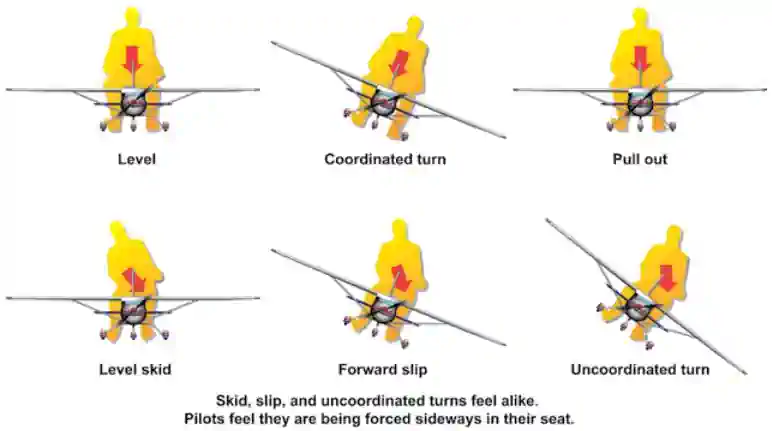Nerves
Nerves in the body's skin, muscles, and joints send signals to the brain, which, along with other sensory organs, informs the body about its position.
Introduction to Nerves
- Nerves in the body's skin, muscles, and joints send signals to the brain, which, along with other sensory organs, informs the body about its position.
- These tactile signals indicate the pilot's current position.
- The pilot feels acceleration when pushed back into the seat.
- Often termed "flying by the seat of your pants."
- Forces created in turns can lead to false sensations of the proper direction of gravity and may give the pilot a false sense of which way is up.
- Uncoordinated turns, especially climbing turns, send misleading signals to the brain
- Skids and slips give the sensation of banking or tilting.
- Turbulence can also create motions that confuse the brain.
- Pilots need to be aware that fatigue or illness can exacerbate these sensations and ultimately lead to subtle incapacitation.
Postural Considerations
- The postural system sends signals from the skin, joints, and muscles to the brain, which interprets them in relation to the Earth's gravitational pull. [Figure 1]
- These signals determine posture.
- Inputs from each movement update the body's position to the brain constantly.
- Again, "seat of the pants" flying is mainly dependent upon these signals.
- These sensations, used in conjunction with visual and vestibular clues, can be reasonably reliable.
- However, due to the forces acting upon the body in certain flight situations, many false sensations can occur when acceleration forces overpower the force of gravity.
- These situations include uncoordinated turns, climbing turns, and turbulence.
Nerves Conclusion
- Still looking for something? Continue searching:
